Frizzle Chickens: The Curly-Feathered Friends Every Flock Needs
Curious about the frizzle chicken? Learn what makes their feathers curl, how to care for them, and why they’re the quirkiest birds on the homestead.
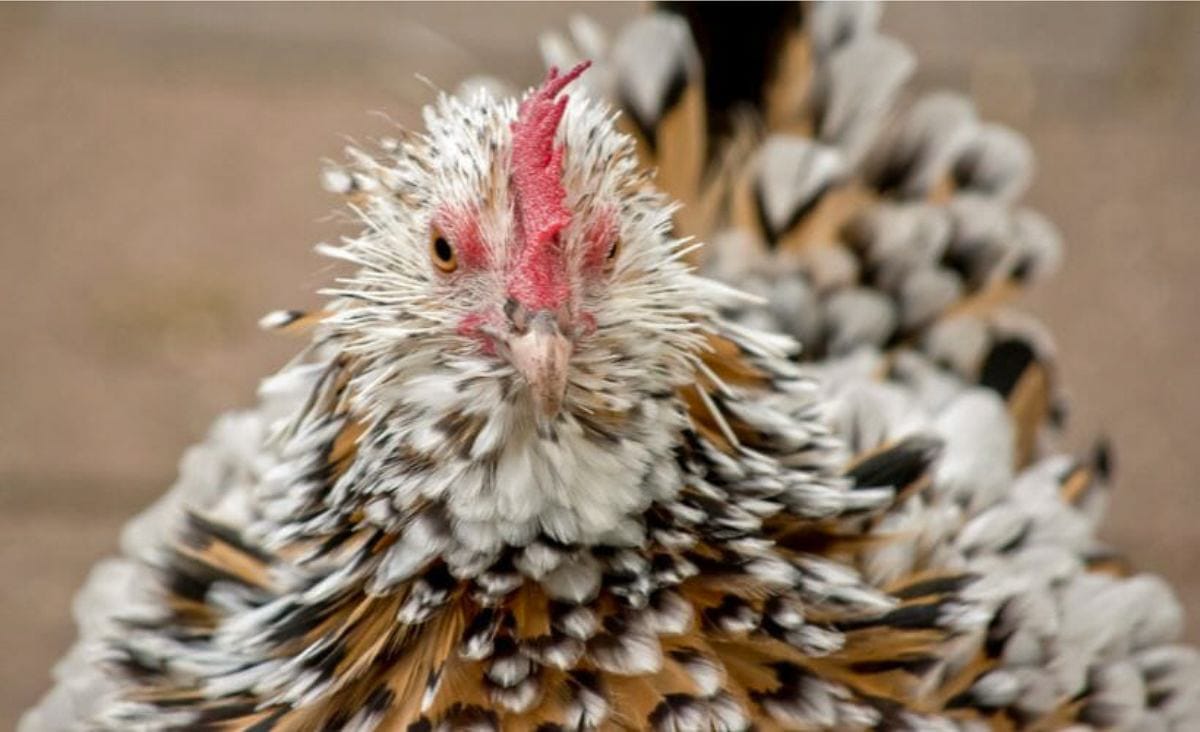
Some chickens make you stop and stare, and frizzles are definitely one of them. With feathers that look like they’ve tussled with a curling iron, they’re hard to miss once you’ve seen one. A far cry from their dinosaur days, that’s for sure.
I’ve raised my share of unique breeds over the years, but the first time I saw a frizzle in person, I remember laughing out loud. They look like living pom-poms… equal parts elegant and ridiculous. But beneath all those curls, they’re still chickens, with their own quirks, care needs, and challenges.
If you’ve ever wondered what makes frizzles so unique (or how to care for them without ruffling their feathers) you’re in the right place.
What Exactly Is a Frizzle Chicken?
Let’s start with the big question: frizzle chickens aren’t actually a breed. They’re a feather type.
Frizzling is a genetic trait that causes each feather to curl backward instead of lying flat. You’ll find the frizzle gene showing up in several breeds, most commonly Cochins, Polish, Japanese bantams, and Plymouth Rocks.
So you can have a frizzled Cochin or a frizzled Polish, it all depends on which breed has the gene. Each has its own size, color, and personality, but they all share that unmistakable frizzle charm. If you’ve ever had one, you know their feathers are impossible not to touch (even though they’d prefer you didn’t).
If you’re curious about identifying your own birds based on feather type or comb shape, my post on how to find out what breed your new chicken is can help you narrow it down.
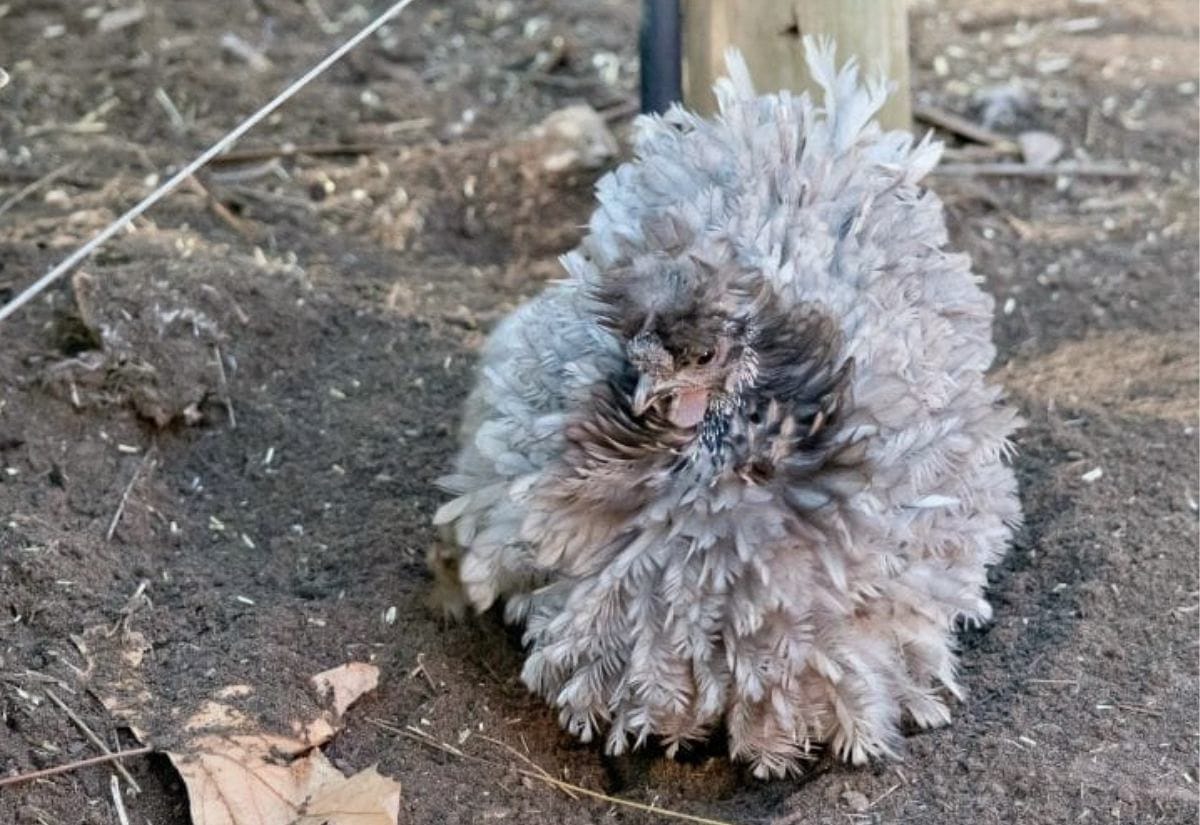
Where the Frizzle Chicken Came From
Frizzles have been turning heads for centuries. The first written record dates all the way back to the 1600s, when Charles Darwin mentioned them in his notes as “Caffie Fowl,” thought to have originated in India or the Far East.
They eventually made their way to Europe and then the U.S., where backyard chicken keepers couldn’t resist their quirky feather style. They were never bred for production, but folks keep them anyway, because really, who could forget a chicken like that?
What Makes Their Feathers Curl
Frizzling comes from an incomplete dominant gene, meaning one copy from either parent is enough to create the signature curls.
If you breed a frizzle with a regular-feathered chicken, about half the chicks will inherit the curly gene. But breed frizzle to frizzle, and you’ll likely get what’s known as a frazzle: a fragile bird with brittle feathers, bald spots, and a shorter lifespan.
I can’t stress this enough: never breed two frizzles together. If you’re hatching your own, always cross a frizzle with a smooth-feathered mate. You’ll get the curls without the problems.
Frizzle vs. Frazzle vs. Sizzle: What’s the Difference?
Honestly, whoever came up with these names deserves a prize, because they describe real variations in feather genetics.
- Frizzle – One copy of the frizzle gene; feathers curl outward in soft waves.
- Frazzle – Two copies of the gene; feathers are brittle, sparse, and often break off.
- Sizzle – A cross between a frizzle and a silkie, producing a bird with both curled and fluffy “silkie” feathers.
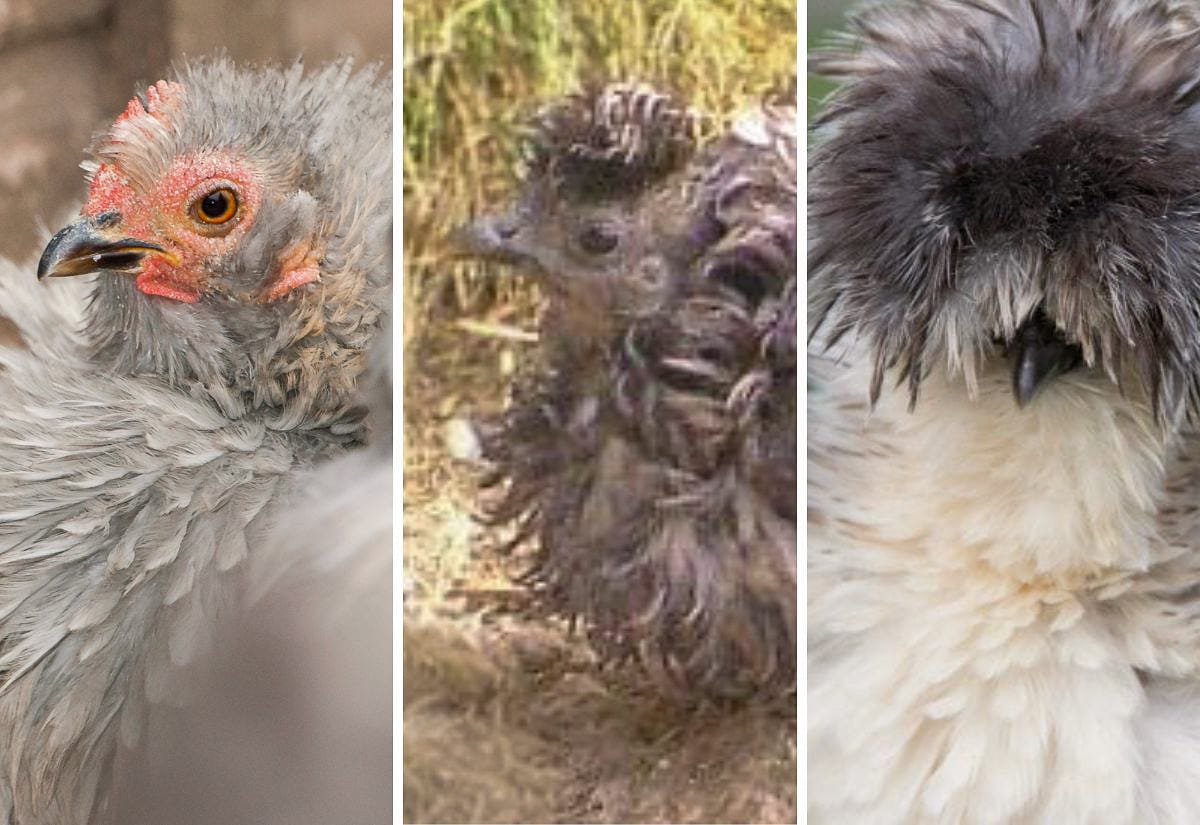
Each has its own look and personality, but only frizzles are considered hardy enough for backyard life. Sizzles are adorable but require even more care. Think of them as the divas of the chicken world.
Caring for Frizzle Chickens: What You Need to Know
Frizzles do fine in most climates, but those feathers don’t do much to keep out the cold. So you’ll just need to pay a bit more attention to housing, weather, and upkeep. In Maine’s wet spring weather, mine look like half-deflated feather dusters by the end of the day.
Feed & Nutrition
They eat just like any other laying hen. A good layer feed, around 16% protein, plus some occasional kitchen scraps or garden greens now and then. Mine are big fans of garden greens and the occasional ripe tomato, basically anything they can steal before I get to it. I like to supplement with crushed oyster shell for strong eggshells.
A little extra protein during molting helps their feathers grow back stronger. You’ll notice they look a little ragged during that time, but that’s normal.
Feather Considerations
With feathers that point the wrong way, frizzles can’t shed rain like normal chickens do. They don’t handle heavy rain or snow well. Wet feathers chill them fast, and that’s never good news for chickens.
If you live in a cold or damp area (like I do here in Maine), give them access to a covered run and make sure they can dry off quickly after wet weather.
Social Life
Frizzles are usually laid-back birds that get along just fine in a mixed flock. They can’t fly well, though, so they’re easy targets for bossier hens. I’ve found that pairing them with other calm breeds, like Cochins or Silkies, works best.
If you’re new to flock dynamics or worried about introducing new birds, my post on how and why to properly quarantine chickens walks through the process safely.
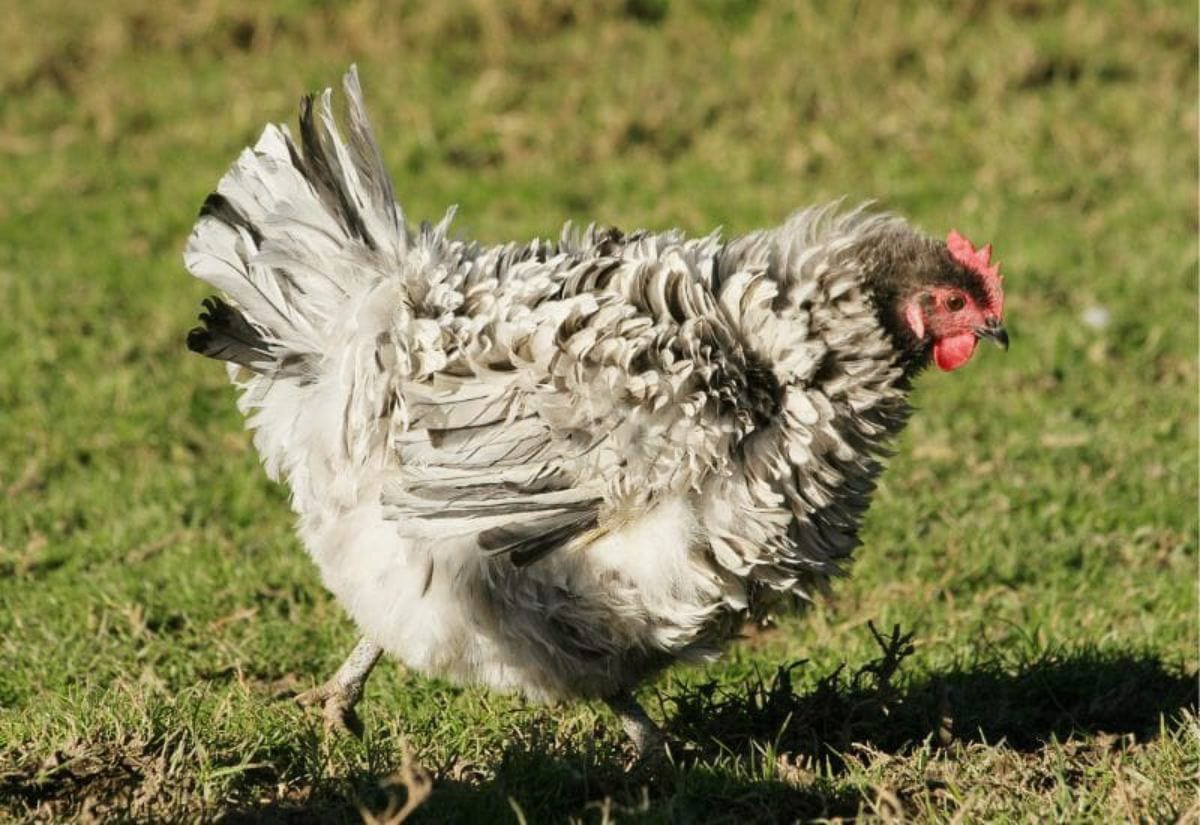
Coop Setup Tips for Frizzles
Frizzles do best in dry, draft-free coops with plenty of ventilation. Plenty of airflow keeps things dry without letting cold drafts in.
I give mine about four square feet inside the coop and plenty of space outside. Ten square feet per bird is a good rule of thumb. Basically what you’d do for any chicken. Use deep, dry bedding like pine shavings, and keep the roosts low. Frizzles can’t fly well and may injure themselves jumping down from high perches.
If you’re building a new coop or making improvements, check out my guide on the best way to protect chickens from predators in your backyard to make sure your setup is as safe as it is cozy.
Common Questions About Frizzle Chickens
If you’re thinking about adding frizzles to your flock, these are the things most people want to know before they do.
Thinking about adding a frizzle or two? Pin this guide for easy reference. It covers everything you’ll need to keep them happy and healthy.
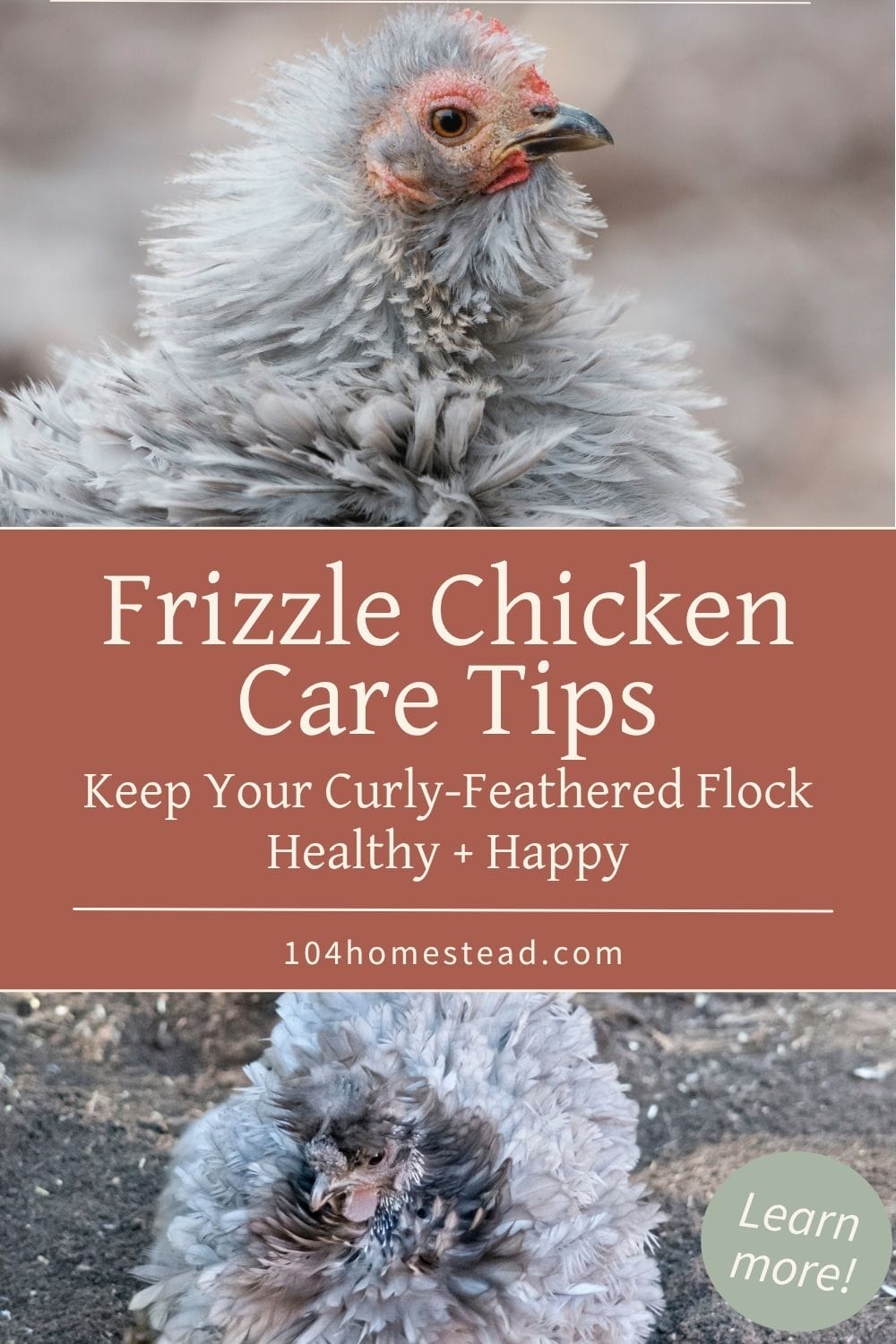
They may not be the most practical birds on the homestead, but they’re hands-down some of the most fun to have around. They add so much personality to the flock, and honestly, that’s worth more than the eggs. I can’t imagine my coop without at least one.
If you’re thinking about adding something a little different to your coop, frizzles are a fun choice. Just be ready to give them a little extra care.

Greetings . Are you able to supply me 4 frizzle chickens?
I would love to have a frizzle chicken too!!
When I broached the chicken keeping subject at home years ago, my wife said she had two requirements: Weird colored eggs, and she would do no work besides taking pictures of them. She didn’t know about cute little Frizzles and Sizzles at the time, or I think there would’ve been an additional requirement added.
Shall I email her for you? Remember, you already have to build a condo attachment to your coop for your newest arrivals. I’d be happy to ship a few frizzle chicks your way 🙂
What color of eggs do they lay?
“This isn’t a gum commercial.” You almost–but not quite–made me spew coffee on my computer with that one! 😀
That being said, I think this is why I can never have chickens… how would I *ever* decide which ones to pick!??
~ Christine
That is precisely why my coop keeps getting bigger. I have impulse control issues an a love for variety.
I’ve never heard of this type of chicken, they’re beautiful!
Aren’t they? They are like the foofoo dog of the chicken world.